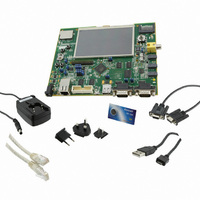AT91SAM9M10-G45-EK Atmel, AT91SAM9M10-G45-EK Datasheet - Page 500

AT91SAM9M10-G45-EK
Manufacturer Part Number
AT91SAM9M10-G45-EK
Description
KIT EVAL FOR AT91SAMG45/9M10
Manufacturer
Atmel
Series
AT91SAM Smart ARMr
Type
MCUr
Specifications of AT91SAM9M10-G45-EK
Contents
Board, Cables, Power Supply
Processor To Be Evaluated
AT91SAM9M10
Processor Series
AT91SAM9
Data Bus Width
32 bit
Interface Type
RS-232, Ethernet, USB, JTAG
Operating Supply Voltage
5 V
Silicon Manufacturer
Atmel
Core Architecture
AVR
Kit Contents
Board
Features
Two High Speed USB Hosts, LCD TFT Display
Svhc
No SVHC (15-Dec-2010)
Mcu Supported Families
AT91SAM9M10,
Rohs Compliant
Yes
For Use With/related Products
AT91SAM9M10
Lead Free Status / RoHS Status
Lead free / RoHS Compliant
Available stocks
Company
Part Number
Manufacturer
Quantity
Price
Company:
Part Number:
AT91SAM9M10-G45-EK
Manufacturer:
INFINEON
Quantity:
10 000
Company:
Part Number:
AT91SAM9M10-G45-EK
Manufacturer:
Atmel
Quantity:
135
- Current page: 500 of 1404
- Download datasheet (22Mb)
31.9
31.9.1
31.9.2
31.9.2.1
31.9.2.2
500
Multi-master Mode
AT91SAM9M10
Definition
Different Multi-master Modes
TWI as Master Only
TWI as Master or Slave
More than one master may handle the bus at the same time without data corruption by using
arbitration.
Arbitration starts as soon as two or more masters place information on the bus at the same time,
and stops (arbitration is lost) for the master that intends to send a logical one while the other
master sends a logical zero.
As soon as arbitration is lost by a master, it stops sending data and listens to the bus in order to
detect a stop. When the stop is detected, the master who has lost arbitration may put its data on
the bus by respecting arbitration.
Arbitration is illustrated in
Two multi-master modes may be distinguished:
Note:
In this mode, TWI is considered as a Master only (MSEN is always at one) and must be driven
like a Master with the ARBLST (ARBitration Lost) flag in addition.
If arbitration is lost (ARBLST = 1), the programmer must reinitiate the data transfer.
If the user starts a transfer (ex.: DADR + START + W + Write in THR) and if the bus is busy, the
TWI automatically waits for a STOP condition on the bus to initiate the transfer (see
21 on page
Note:
The automatic reversal from Master to Slave is not supported in case of a lost arbitration.
Then, in the case where TWI may be either a Master or a Slave, the programmer must manage
the pseudo Multi-master mode described in the steps below.
1. TWI is considered as a Master only and will never be addressed.
2. TWI may be either a Master or a Slave and may be addressed.
1. Program TWI in Slave mode (SADR + MSDIS + SVEN) and perform Slave Access (if
2. If TWI has to be set in Master mode, wait until TXCOMP flag is at 1.
3. Program Master mode (DADR + SVDIS + MSEN) and start the transfer (ex: START +
4. As soon as the Master mode is enabled, TWI scans the bus in order to detect if it is
5. As soon as the transfer is initiated and until a STOP condition is sent, the arbitration
6. If the arbitration is lost (ARBLST is set to 1), the user must program the TWI in Slave
7. If TWI has to be set in Slave mode, wait until TXCOMP flag is at 1 and then program the
TWI is addressed).
Write in THR).
busy or free. When the bus is considered as free, TWI initiates the transfer.
becomes relevant and the user must monitor the ARBLST flag.
mode in the case where the Master that won the arbitration wanted to access the TWI.
Slave mode.
In both Multi-master modes arbitration is supported.
The state of the bus (busy or free) is not indicated in the user interface.
501).
Figure 31-22 on page
501.
6355B–ATARM–21-Jun-10
Figure 31-
Related parts for AT91SAM9M10-G45-EK
Image
Part Number
Description
Manufacturer
Datasheet
Request
R

Part Number:
Description:
KIT EVAL FOR AT91SAM9M10
Manufacturer:
Atmel
Datasheet:

Part Number:
Description:
IC MCU 16/32BIT ARM9 324TFBGA
Manufacturer:
Atmel
Datasheet:

Part Number:
Description:
At91 Arm Thumb-based Microcontrollers
Manufacturer:
ATMEL Corporation
Datasheet:

Part Number:
Description:
MCU, MPU & DSP Development Tools KICKSTART KIT FOR AT91SAM9 PLUS
Manufacturer:
IAR Systems

Part Number:
Description:
DEV KIT FOR AVR/AVR32
Manufacturer:
Atmel
Datasheet:

Part Number:
Description:
INTERVAL AND WIPE/WASH WIPER CONTROL IC WITH DELAY
Manufacturer:
ATMEL Corporation
Datasheet:

Part Number:
Description:
Low-Voltage Voice-Switched IC for Hands-Free Operation
Manufacturer:
ATMEL Corporation
Datasheet:

Part Number:
Description:
MONOLITHIC INTEGRATED FEATUREPHONE CIRCUIT
Manufacturer:
ATMEL Corporation
Datasheet:

Part Number:
Description:
AM-FM Receiver IC U4255BM-M
Manufacturer:
ATMEL Corporation
Datasheet:

Part Number:
Description:
Monolithic Integrated Feature Phone Circuit
Manufacturer:
ATMEL Corporation
Datasheet:

Part Number:
Description:
Multistandard Video-IF and Quasi Parallel Sound Processing
Manufacturer:
ATMEL Corporation
Datasheet:

Part Number:
Description:
High-performance EE PLD
Manufacturer:
ATMEL Corporation
Datasheet:











